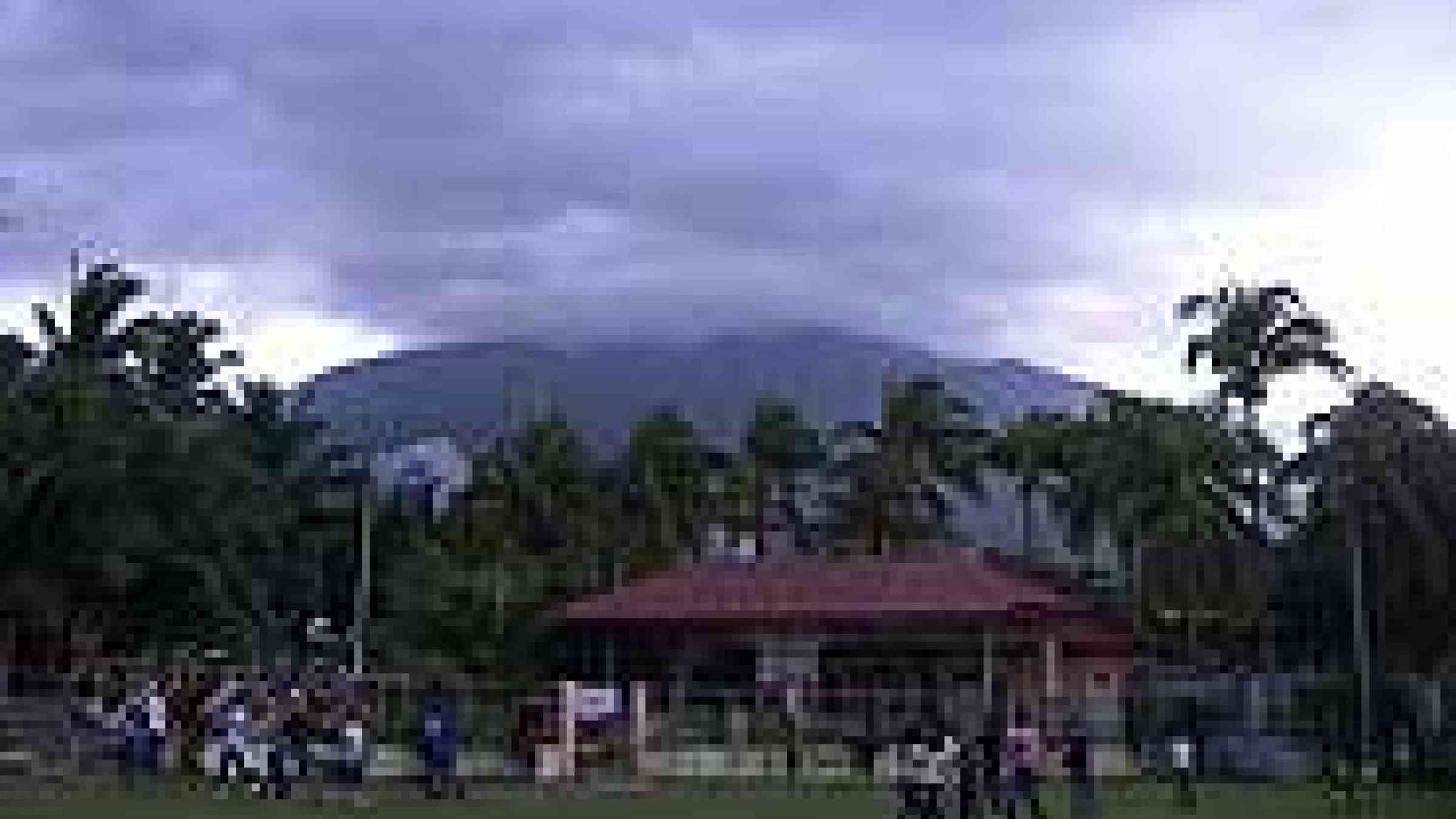Philippines: Children, communities benefitting from Save the Children’s disaster preparedness work as volcano threatens major eruption

Save the Children has coordinated with Philippine authorities in helping to evacuate thousands of residents to safety in the communities near the lava-oozing Mayon volcano, which experts believe could soon intensify into a major eruption.
“We are working with the government to make sure children and families are safe from a potentially life-threatening emergency situation,” said Hussein Halane, Save the Children’s senior advisor for humanitarian accountability.
“The good news is, thousands of children in the area have participated in Save the Children’s disaster risk preparedness training,” Halane said. “That means they understand what is happening now and have received emergency survival skills training that gives them more confidence in facing an uncertain situation.”
Save the Children works with schools to develop and practice emergency simulation exercises and evacuation drills for teachers and students. The agency also works with community leaders who have carried out risk assessment mappings of their neighborhoods and identified vulnerable households. These leaders have already stockpiled goods like clean clothes and other emergency supplies for situations like the one currently developing around Mayon.
In the communities of Guinobatan and Camalig, which are near the volcano, Save the Children has mobilized the volunteer emergency response teams the agency trained. About 12,000 people from these communities are now in 40 shelters. The emergency response teams are already overseeing two Child Friendly Spaces in evacuation centers, and will set up more of these in the days to come. These spaces give children an opportunity to play in a safe space and receive support amidst the potential trauma of an emergency situation.
Save the Children has worked on disaster risk preparedness in the Philippines since 2003. Together with children and schoolteachers, the agency developed “My Little Book on Disaster Preparedness,” which the Philippine government has adopted for use in 65 schools. This series of workbooks contains lessons, stories, games, and activities designed to educate children about different kinds of natural hazards and safety precautions.
The Philippines ranks number 12 among 200 countries and territories whose populations are most at risk from natural hazards according to the United Nations’ Mortality Risk Index. Typhoons and flooding are the most prevalent natural hazards since 2000, and these events trigger landslides, mudslides, and storm surges.
However, volcanic eruptions are also a major risk factor in the Philippines. An eruption from Mayon killed dozens of people in 1993 and in 1991 Mount Pinatubo killed hundreds.
Please contact Tanya Weinberg tweinberg@savechildren.org for more information, 001 202 640 6647 or 001 202 247 6610